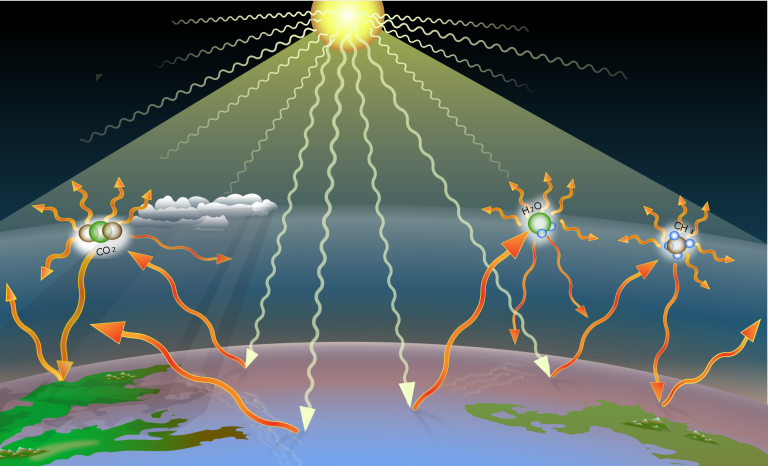The planet earth
Planet profile
Orbit: 149,600,000 km (1.00 AU) from Sun
Diameter: 12,756.3 km
Mass: 5.972e24 kg
Earth is the third planet from the Sun and the only astronomical object known to harbor life. According to radiometric dating and other sources of evidence, Earth formed over 4.5 billion years ago.
Earth’s gravity interacts with other objects in space, especially the Sun and the Moon, which is Earth’s only natural satellite. Earth orbits around the Sun in 365.26 days, a period known as an Earth year. During this time, Earth rotates about its axis about 366.26 times.
History
Earth is the only planet whose English name does not derive from Greek/Roman mythology. The name derives from Old English and Germanic. There are, of course, hundreds of other names for the planet in other languages. In Roman Mythology, the goddess of the Earth was Tellus – the fertile soil (Greek: Gaia, terra mater – Mother Earth).
It was not until the time of Copernicus (the sixteenth century) that it was understood that the Earth is just another planet.
Rotation
Earth’s rotation period relative to the Sun—its mean solar day—is 86,400 seconds of mean solar time (86,400.0025 SI seconds). Because Earth’s solar day is now slightly longer than it was during the 19th century due to tidal deceleration, each day varies between 0 and 2 SI ms longer.
Earth’s rotation period relative to the fixed stars, called its stellar day by the International Earth Rotation and Reference Systems Service (IERS), is 86,164.0989 seconds of mean solar time (UT1), or 23h 56m 4.0989s. Earth’s rotation period relative to the precessing or moving mean vernal equinox, misnamed its sidereal day, is 86,164.0905 seconds of mean solar time (UT1) (23h 56m 4.0905s). Thus the sidereal day is shorter than the stellar day by about 8.4 ms.[190] The length of the mean solar day in SI seconds is available from the IERS for the periods 1623–2005 and 1962–2005.
Earth’s energy budget
Earth’s energy budget accounts for the balance between the energy that Earth receives from the Sun, and the energy the Earth radiates back into outer space after having been distributed throughout the five components of Earth’s climate system and having thus powered Earth’s so-called heat engine. This system is made up of Earth’s water, ice, atmosphere, rocky crust, and all living things. Quantifying changes in these amounts is required to accurately model the Earth’s climate.
Incoming, top-of-atmosphere (TOA) shortwave flux radiation, shows energy received from the sun (Jan 26–27, 2012). Outgoing, longwave flux radiation at the top-of-atmosphere (Jan 26–27, 2012). Heat energy radiated from Earth (in watts per square metre) is shown in shades of yellow, red, blue and white. The brightest-yellow areas are the hottest and are emitting the most energy out to space, while the dark blue areas and the bright white clouds are much colder, emitting the least energy.
Also read about
- 5 Best Telescopes for Viewing Planets in 2020 [Saturn, Mars, Jupiter, etc.]
- 5 Best Dobsonian Telescopes in 2020 [From 8 to 12-inch Options]
- 5 Best Refractor Telescopes in 2020 [for Planets & Astrophotography]
Received radiation is unevenly distributed over the planet, because the Sun heats equatorial regions more than polar regions. “The atmosphere and ocean work non-stop to even out solar heating imbalances through evaporation of surface water, convection, rainfall, winds, and ocean circulation.” Earth is very close to being in radiative equilibrium, the situation where the incoming solar energy is balanced by an equal flow of heat to space; under that condition, global temperatures will be relatively stable.
Globally, over the course of the year, the Earth system—land surfaces, oceans, and atmosphere—absorbs and then radiates back to space an average of about 340 watts of solar power per square meter. Anything that increases or decreases the amount of incoming or outgoing energy will change global temperatures in response.


![12 Best Budget Telescopes in 2024 [Maximum Value for Money]](https://www.planetguide.net/wp-content/uploads/2019/12/refreactor-telescope-768x461.jpg)

![12 Best Telescopes for Kids in 2024 [Toddlers to Teens]](https://www.planetguide.net/wp-content/uploads/2019/12/Depositphotos_2254021_l-2015-768x512.jpg)

